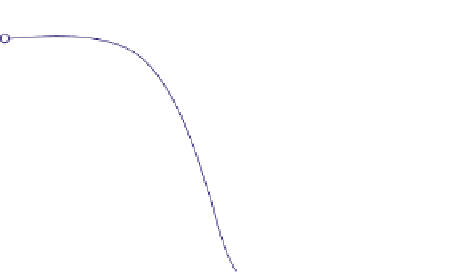Biomedical Engineering Reference
In-Depth Information
(a)
30
Glucose
Ethanol
Biomass
25
20
15
10
5
0
0
5
10
15
20
25
30
Batch cultivation time, h
(b)
20
15
Glucose
Ethanol
Biomass
10
5
0
0.0
0.1
0.2
0.3
0.4
0.5
, h
-1
D
FIGURE 12.8
Variations of total cell (viable and dead) dry biomass, glucose, and ethanol concentrations
during (a) batch and (b) continuous cultivations of
S. cerevisiae
LBG H 1022 (ATCC 3216) in a 4 m
3
air-lift
reactor with a glucose-limited medium. The data are from “Lotz M. 1986 Untersuchungen zur Hefekultivierung
auf Nebenprodkten der St
¨
rkegewinnung in einer Pilotanglage, PhD Dissertation, University of Hannover
and Lotz M., Fr
¨
hlich S., Matthes R., Sch
¨
gerl K. and Seekamp M. 1991 Bakers' yeast cultivation on by-products
and wastes of potato and wheat starch production on a laboratory and pilot plant scale.
Process Biochem
.
26: 301
e
311.”
productive variant will become dominant, decreasing productivity. In the batch culture, the
number of generations available is usually less than 25 (from slant cultures to a commercial-
scale fermentor) for the revertant cell to outgrow the more productive strain is limited. Cells
at the end of the batch are not reused (though resulting in higher cost). These considerations
of genetic stability are very important for cells with recombinant DNA and are discussed in
detail in Chapter 16.
Another consideration is operability and reliability. Batch cultures can suffer great vari-
ability from one run to another. Variations in product quality and concentration create prob-
lems in downstream processing and are undesirable. However,
long-term continuous





























































































































































































































































































































































Search WWH ::

Custom Search